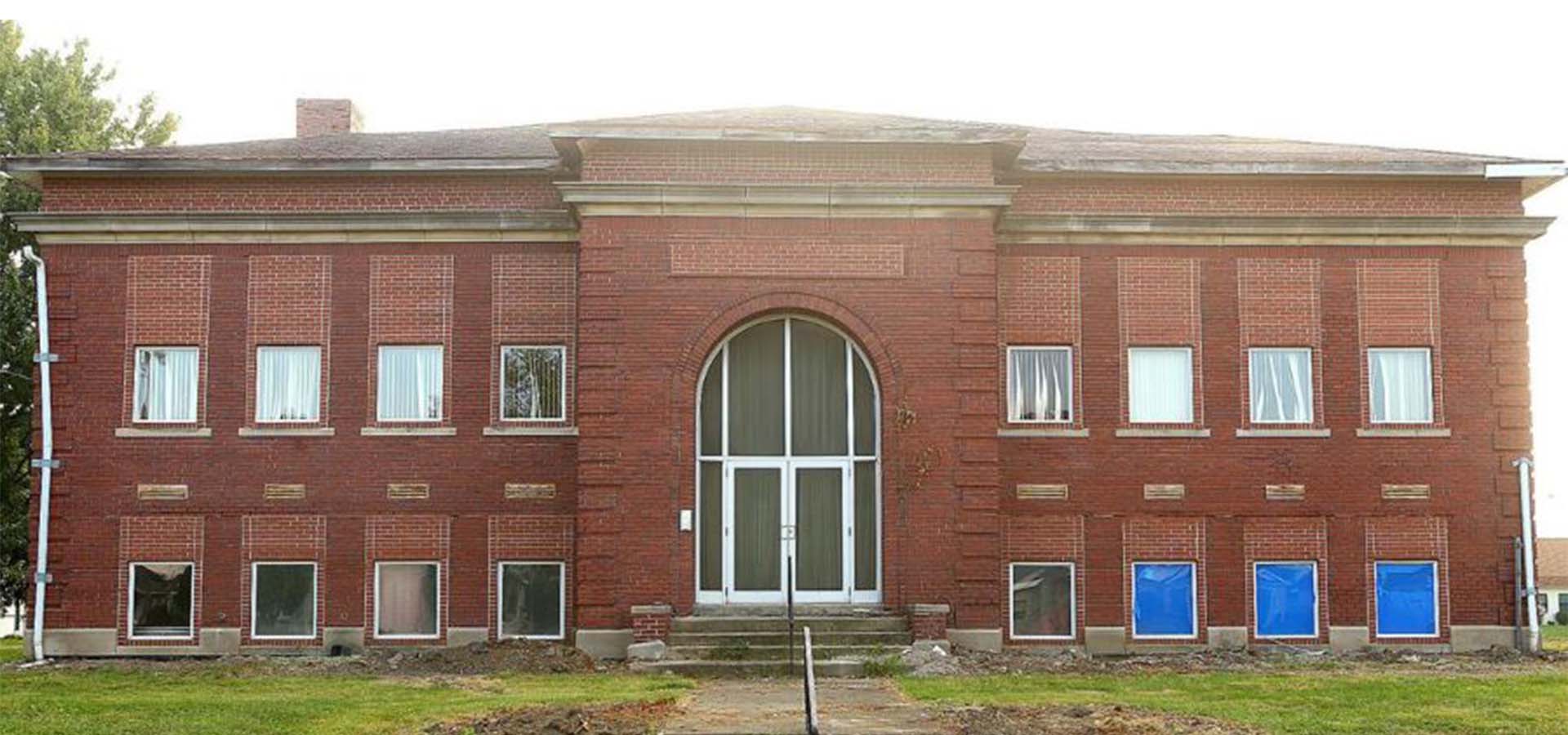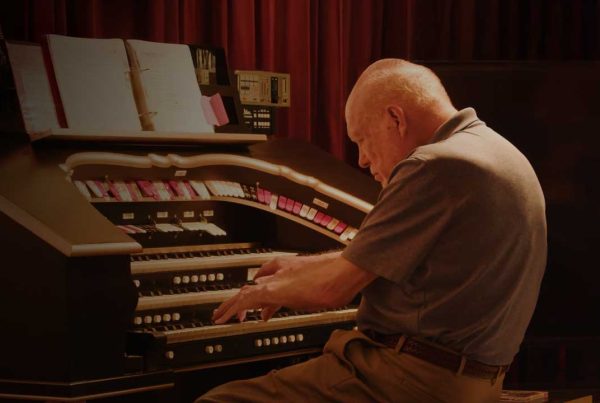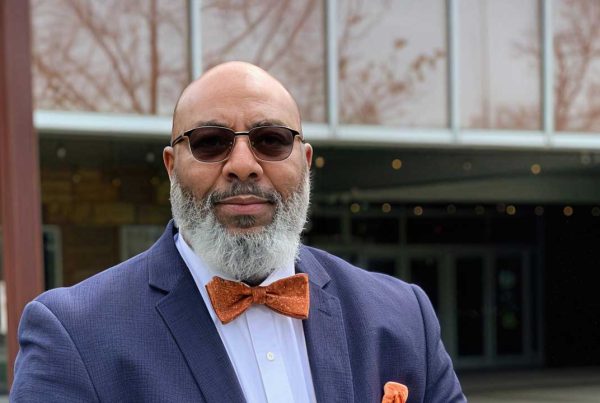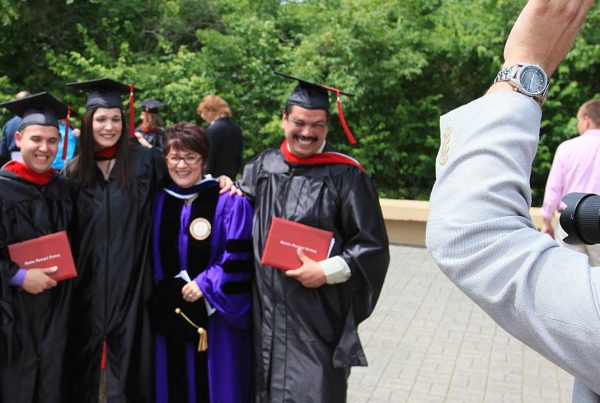In the heart of downtown Kokomo, Indiana sits an abandoned building with a storied past. New CTS Alumni Trustee and Alumnus Rev. William Smith (MDiv ‘20) plans to bring that building back to life and give those stories voice anew. His efforts began 7 years ago during a job interview for his current role as Pastor of Second Missionary Baptist Church (SMBC) in Kokomo. Smith says, “During the interview process I noticed an abandoned school in the middle of the neighborhood. It just fascinated me – it was a big building, and it pulled at my heart. I said, ‘If I become the pastor of this church, we’re going to do something with this building.’”
Diving deeper into the history of the 100-year-old building, Smith found out it was called Douglass School and had been a racially segregated school that all black children in Kokomo from 1920 to integration in the 1950s had to attend. After Kokomo’s schools were integrated, Douglass School closed its doors in the 1960s. Since then, the building has had other iterations try to bring it back to life, but its history has faded into the background of the city’s memory. Rev. Smith wanted to change that.
“I did not want to see Douglass School be turned into apartments. I didn’t want to see our history go in the direction of just being used for someone’s profit. I wanted to be able to celebrate the history of this institution. Many of the older black individuals in our community had to attend this school. They have stories that need to be told – stories about walking past other schools they couldn’t attend and wondering why. Now those individuals have gone on to be very successful and do amazing things, and their stories deserve to be preserved,” says Smith.
Rev. Smith did get the job as Pastor at SMBC and made good on his internal vow to do something with Douglass School. The church partnered with city leadership to come up with a restoration plan. The city agreed to make upgrades to the building ensuring it was structurally sound, and then they gave Rev. Smith and SMBC the keys. Rev. Smith says the leadership of Kokomo has been a wonderful, dedicated partner in their efforts.
The next step was for SMBC to figure out what the building should become. They decided to survey the community to find out what residents thought the building should be. The survey went out right at the beginning of the Covid pandemic in 2020 – this allowed them to have a captive audience from community members stuck at home during quarantine. There was a strong reaction from the community, both from those in support of the idea and those against it. The overwhelming consensus was that Douglass School should become a museum and cultural center to preserve Kokomo history and promote racial reconciliation. Shortly after the survey concluded, George Floyd was killed by police in Minneapolis, Minnesota, sparking fervor for the project and strengthening resolve that the project was both important and necessary.
Restoration of the Douglass School began in 2020. Despite delays from Covid precautions and contractor delays in supply chains, Rev. Smith is hopeful that their projected 2024 opening is on track. The building will become a museum and cultural center dedicated to preserving history, fostering racial reconciliation, and serving community need for event space. The building now has electricity that is primarily powered by on site solar energy and backup batteries. They plan to run at least 50% of the building on renewable energy sources to maintain environmental sustainability. Solar outlets will be set up on campus and plans are in place to provide several electric car chargers so that people can come use renewable energy free of charge.
Smith notes, “As Indiana residents know, Kokomo has had some bad storms in the recent past. This building will be a hub where people can come charge up off the grid during future power outages.” The building will also add community showers in the future to serve local need.
The basement of the building (originally the Douglass School gym/cafeteria) will be turned into an event space. People will be able to rent it out for family reunions, birthdays, and events. The top level has four classrooms. One will be called the Heritage Classroom – it will be decorated to look like a Douglass School classroom would have looked in the 1940s and 50s. People will be able to get a feel for how things looked back in the day. That room holds particular history – in 1940 it was visited by Eleanor Roosevelt. Her visit was at the encouragement of then principal Rev. Henry A. Parry, the pastor of the local AME church and a friend of George Washington Carver. During her visit, Roosevelt launched a fundraiser and encouraged support for the building of Carver Community Center for African-American children. At the time, black children were not allowed to attend the other community recreational center due to strict segregation.
Another classroom will be a board room space where community groups can have meetings. Rev. Smith calls it the “Room of Firsts” (noting that Kokomo is nicknamed the City of Firsts). He says, “Minority groups will be highlighted on the walls of the room so that when you are having your community meeting, you have to look at a person of color. You have to see someone who has accomplished something who is a person of color.” The Room of Firsts will be used as a traveling exhibit room so that people in Indiana can see exhibits from places like the Smithsonian whether or not they have the means to travel.
The third room will be the actual museum and will display the history of school segregation in Kokomo and in our nation. The fourth room will be a coffee shop concept room. Smith describes it as a mix between a library, bookstore, and museum shop. Minority owned small businesses will be able to sell their goods in the shop and will benefit from its proceeds.
Smith says that while their focus initially was the building itself, it has become much more. The city has now given them additional plots of land to do housing projects. “We want it to be FOR the community. As a pastor, I’m always thinking about how to meet people’s needs.” His primary hope is that it will be a place of racial reconciliation. “There are friendships that started in that school and that continued for years and still continue. I have 60-70 year old men calling and crying, talking about how they didn’t understand what was going on at the time. They didn’t realize all their life that this forced segregation happened in Kokomo, and it hurts them to realize it happened and they never knew.” Thanks to the restoration of Douglass School, generations going forward WILL know and can learn valuable lessons to create a better future.
Rev. Smith offers this advice to future seminary students: “Seminary is such a rich time to put your experiences and learning together and ask, ‘God, what are you calling me to do?’ I really have seen how my experiences and my education have formulated a vision for the future. I grew up as a young boy in meetings where they were talking about the segregated school in our neighborhood. Our church used it as a museum and history was talked about. But now to actually be doing it myself, I didn’t realize it, but because I was in the room at that time and had that experience – it, along with my education, has helped formulate my vision for the future. Never forget about your experiences, because your experiences – whether good or bad – can be the stepping stone for what God wants to do in your life.”






